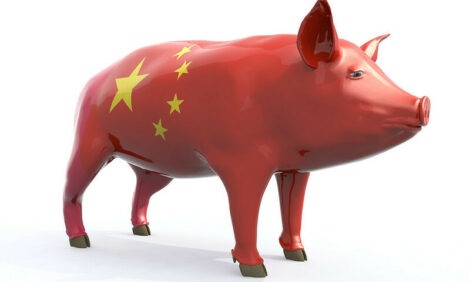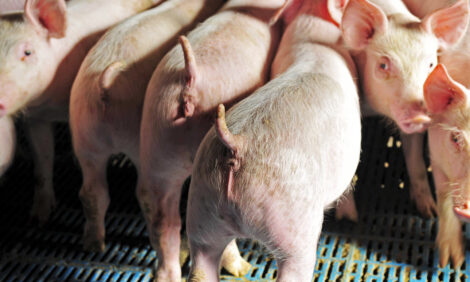



CME: Pig Prices Projected to Rise
US - The Food and Agricultural Policy Research Institute (FAPRI) of the University of Missouri released their March report which details 10-year baseline projections for US agricultural markets, farm programme spending, farm income, and a variety of other indicators, write Steve Meyer and Len Steiner.For the next several years, FAPRI projects continued pressure on farm finances due to lower agricultural commodity prices.
Projected livestock, poultry, and milk prices all decline year-over-year in 2016 as supplies continue to increase.
Projected cattle prices fall further in 2017 and 2018, as recent increases in cow numbers translate into more calves and beef production.
Switching topics to last week, mid-week the European Central Bank announced a cut to interest rates, more bond purchases and a potential subsidy to lenders in a continued effort to fight the threat of deflation.
The announcements were rounded out with the Bank declaring it was done lowering borrowing costs for now.
Financial markets were rocked with volatility after this announcement, as has been the case in past international monetary policy announcements, however different from recent months was the limited spill-over into the agricultural futures contracts.
Live Cattle (fed animal) futures market prices for the balance of 2016 increased almost every day last week.
The April Live Cattle contract ended trading on Friday at $139.80 per cwt., up $1.50 from Thursday’s close.
For the week, the average of daily closing prices for the April contract was $137.59 per cwt., up $1.15 from the prior week and was at the highest for that contract since the week ending November 6, 2015 (barely edging out the week ending January 1, 2016).
The nearby Live Cattle contracts still have large premiums compared those later in the year (e.g. April’s prices are much higher than in subsequent contract months); the difference between the April and June was $10.54 per cwt. and the April-August difference was $15.42.
Looking at daily closes, feeder cattle futures prices also gained most every day last week. The April Feeder contact averaged $159.94, up $1.94 for the week. That was the highest weekly average for the April contract since the week ending January 8, 2016.
As is rather typical, price premiums/discounts across futures contract timeframes for Feeder Cattle do not match those of Live Cattle.
Seasonally, cash fat cattle prices drop in the summer months more than those of lighter weight animals.
Still, there are large feeder cattle price declines relative to April’s in the late 2016 contract months. For example, the November Feeder Cattle contract last week averaged $8.64 per cwt. below April’s.
In the futures market, hog prices also gained ground last week.
Using the daily closes, all 2016 contracts were higher for the week. The April Hog contract averaged $71.19 per cwt. for the week (average of daily closes) reached its highest level since the week ending October 23, 2015.
The normal seasonal pattern is for the strongest hog prices in the summer months as supplies of market-ready animals tighten and slaughter hog weights are depressed due to summer heat.
The June, July, and August futures contracts currently have a rather normal premium compared to the April contract. For example, the June contract last week averaged $82.24 per cwt., about $11.00 above April’s.
Futures prices being offered this summer are strongly profitable for producers. Also, as it typical, the contracts in the fourth quarter of 2016 are well below those for this summer.
Of course, that is because hog slaughter will be largest in that quarter in typical years and will be so again in 2016. In fact, the risk in 2016 is probably that a larger than normal summer to fall increase in slaughter occurs.
Importantly, for many producers the October and December futures contracts are currently offering price levels above cost of production based on Iowa State University estimates, which we periodically summarise in the DLR.
Today, we highlight one graphic, Federally Inspected weekly hog slaughter as reported by USDA agencies. In recent weeks, slaughter has been near 2015’s levels.
In conjunction, slaughter hog prices have been near year ago levels, too. Seasonality in slaughter levels also is apparent in the graphic.






